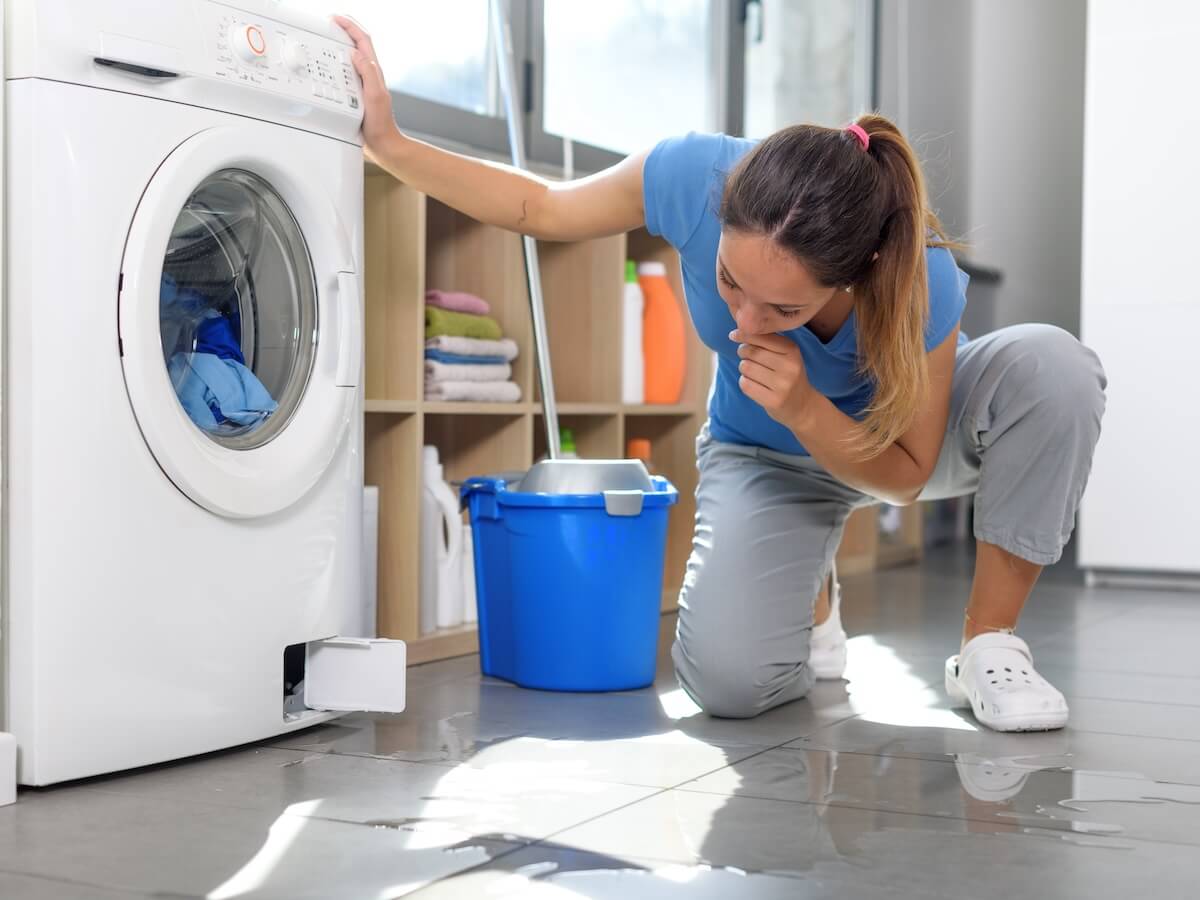
Why is My Washer Leaking Water From the Bottom?
 It’s nice to get your feet wet now and then, but your laundry room floor shouldn’t turn into a mini pool every time you do a load of laundry. If you find your washing machine dripping from the bottom but can’t find the source, we’re here to help troubleshoot.
It’s nice to get your feet wet now and then, but your laundry room floor shouldn’t turn into a mini pool every time you do a load of laundry. If you find your washing machine dripping from the bottom but can’t find the source, we’re here to help troubleshoot.
What to Check If Your Washing Machine Leaks When Filling Up
If you’ve noticed a leak from the bottom of your machine as it fills, it could be due to a faulty tub seal or your washer overfilling with water.
Bad Tub Seal
The tub seal prevents water from leaking into the machine where the transmission shaft or basket shaft enters the washing tub. If your tub seal has been damaged, water may leak out of the bottom of your washing machine.
To troubleshoot, you may have to remove the rear or front panel, depending on whether you have a front-load or top-load washer. Once you’ve removed the correct panel — often the rear panel for front loaders and the front panel for top loaders — you can run a cycle and see if water leaks from where the transmission shaft passes through the tub. If it does, your tub seal is likely the culprit. In which case, it may be best to get professional assistance.
Faulty Water Level Switch
This pressure-activated switch is responsible for filling your washing machine with the correct amount of water.
As water fills your machine’s tub, the air inside compresses and pushes against this switch. It activates when a certain air pressure has been reached and stops the flow of water.
If this switch goes bad, your washer may overfill. Investigating this issue might be best left to the professionals, as the procedure varies from machine to machine and may involve removing the control panel and/or using a multimeter to measure continuity.
Washing Machine Leaking From Bottom During Spin Cycle
If your washing machine is leaking from the bottom during the spin cycle, there are a few potential culprits. You may have a kinked or clogged drain hose or a backed-up water pump.
Clogged Drain Hose or Water Pump
Between the wash and rinse cycles, your washing machine drains the tub and spins water out of your clothes. So, if your floor is covered in soapy water, a kinked or clogged drain hose or plugged-up water pump could prevent proper drainage and cause leaks during the spin cycle.
We don’t recommend trying to fix a clogged water pump on your own, but it may be fairly straightforward to clean out a clogged drain hose.
To investigate your drain hose, pull your washing machine away from the wall and find the hose on the back that leads to a drain or drain pipe. Ensure that it isn’t kinked. If it is, unkink it and attempt to run your washer again. If your leak persists, remove the hose from the machine and rinse it out with hot water, or use a drain snake/pipe cleaner to clear it out. If the leak stops after reconnecting the hose and running a cycle, give a big “Woo-hoo!” and move on with your day. If it doesn’t, read on to discover other potential culprits.
Washing Machine Leaking From Bottom During Drain Cycle
Since spin and drain cycles are so interconnected, it makes sense that the same suspects for leaky spin cycles apply to leaky drain cycles. Both faulty water pumps and drain hoses can cause your washing machine to leak during the drain cycle. However, if you only have an issue during the drain cycle, it could also be due to loose drain hose clamps.
Loose Drain Hose Clamps
Whether you have a top load (both impeller or agitator type) or a front load washing machine, loose or damaged drain clamps can lead to wet floors. Though there are many types of drain hose clamps, one of the most common is squeezable. These can be identified by their lack of screw heads. Here’s how to remove this type of clamp and replace it:
- Use a pair of pliers to squeeze down on the clamp’s ears (the tabs that extend outwards from the circular part of the clamp), and slide it down the hose.
- Remove the hose from the washing machine.
- Squeeze the ears again, and slide it off the hose.
- Repeat the process to install a new hose clamp
Once your new hose clamp is installed, start your washing machine. Wait for the drain cycle to see if your washing machine continues to leak. If it doesn’t, congratulations — you may have found your culprit! If it does continue to leak, this may be due to a kinked/clogged drain hose or a faulty water pump. If unkinking and clearing out your drain hose doesn’t stop the leak, consider calling a professional to diagnose your issue.
Water Coming From Under Washer? Let Rent-A-Center Help.
Have you tried everything, only to be left with a washing machine that’s still leaving water all over your laundry room floor? Why not get an upgrade from Rent-A-Center? With free delivery and flexible payment options, we make upgrades easy. Plus, we provide free repairs or replacements should you have any issues with your appliance due to a manufacturing defect during the term of your agreement. And you can do it all without using credit! Check out our selection online or at a Rent-A-Center near you.